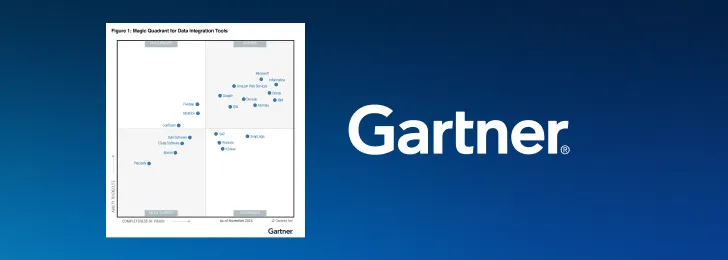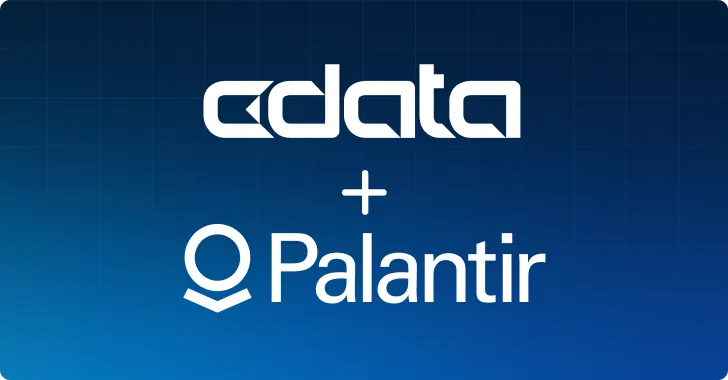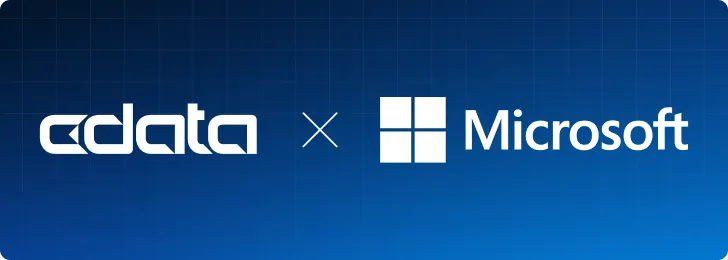
When data capture processes are inefficient, customers encounter a variety of challenges that not only hinder their interactions with a business but also impact overall satisfaction. From inaccuracies and time-consuming procedures to security concerns and limited accessibility, the effects of inefficient data capture are diverse and far-reaching.
As businesses strive to manage their data efficiently, they turn to innovative solutions to address the issues that are associated with data-capture challenges. As a response to the issues of inaccuracies, time-consuming processes, and security concerns that are related to data capture, Microsoft SQL Server's change data capture (CDC) feature is a robust solution. CDC not only enhances data accuracy but also significantly reduces the time and effort that is involved in tracking modifications. In addition, the CDC feature's ability to maintain historical data ensures a comprehensive audit trail, which addresses security and compliance concerns.
This article explores how SQL Server CDC is an effective remedy for data capture pain points, providing businesses with a streamlined and efficient approach to data capture that conforms to demands for precision, speed, and data security.
What is Microsoft SQL Server's change data capture?
Change data capture (CDC) is a mechanism for capturing modifications made to data within a specified table, where modifications include insertions, updates, and deletions. When CDC is enabled for a specified table, any occurrences of data insertion, modification, or deletion trigger the CDC process to capture those changes from the transaction log. Then, the collected information is appended to the corresponding change table, creating a comprehensive record of changes in your data.
Microsoft SQL Server uses embedded, log-based CDC processes. Other methods (for example, table differencing, database triggers and so on) can be inefficient, creating substantial overhead on source servers. However, embedded CDC uses a background process to examine database transaction logs and capture modified data. As a result, transactions remain unaffected, and the performance impact on source servers is kept to a minimum.
What are change or CDC tables?
Change tables are an integral part of the CDC process, serving as a repository for capturing and managing changes. These specialized tables store information about data changes that occur in a tracked table. When you enable CDC on a database table, SQL Server automatically creates a corresponding change table to capture and store details about the modifications made to your tracked table.
Within the CDC framework, a change table works as follows:
- Structure: A change table's structure mirrors the structure of your tracked table. The change table contains columns that represent the primary key columns of the tracked table, and it also contains additional metadata columns that store information about the type of change, when the change occurred, and other relevant details.
- Change captures:As changes (insertions, updates, and deletions) occur in a tracked table, the CDC process captures these changes from the transaction log. Then, this change information is formatted and stored in the change table.
- Change types: The change table includes a column that specifies the type of change for each record. Common change types include 'I' for insert, 'U' for update, and 'D' for delete. This column enables you to easily see the nature of each change.
- Querying changes: You can query a change table to retrieve information about the historical changes that have occurred in your tracked table. This capability provides a systematic way to track and analyze alterations to your data over time.
- Retention: Change tables can have a retention period, after which old change records are removed. This feature helps manage the size of such tables and ensures that they remain focused on only recent and relevant changes.
Key use cases for Microsoft SQL Server CDC
CDC ensures the synchronization of your systems. In the contemporary business landscape, where high-speed data environments require timely decision making, data harmony is critical. As a result, the need to understand key use cases for CDC is essential for exploiting its capabilities effectively. The following use cases (along with others like search index updates and data movement across WANs and geographically distributed systems) highlight the versatility of CDC in addressing the dynamic demands of modern data management.
Incremental data loading
CDC is vital for incremental-loading scenarios, where only the modified data needs to be transferred. This aspect minimizes the impact on network bandwidth and expedites data integration. Increment loading is critical in processes like extraction, transformation, and loading (ETL). Traditional approaches often involve loading entire datasets, which creates performance issues because of long load times. However, CDC incremental loading results in faster and more responsive data updates in an ETL scenario, ensuring that only relevant changes are captured and loaded.
Real-time analytics
CDC enables organizations to feed real-time data changes into analytical systems, facilitating the most up-to-date insights for informed decision-making. Financial institutions are a good example of an industry that relies on real-time analytics to monitor transactions and to detect fraudulent activity. Without CDC, an institution might experience delays in updating its analytics platform, relying instead on periodic batch processes that load large volumes of data. In contrast, with CDC, the analytics system is always synchronized with the most recent transactional changes, providing a dynamic and accurate representation of the financial landscape. This capability is crucial for making timely decisions, identifying potential risks, and maintaining the integrity of the institution's financial analytics.
Real-time data integration
For organizations that require the most current data in their data warehouses, CDC supports real-time data integration. With CDC, changes are captured in near real-time and are propagated swiftly to the data warehouse, allowing for timely and accurate analytics and decision making. The healthcare industry is a good example of where CDC real-time integration has major impact. Such integration improves decision making for aspects like scheduling and billing, consistency across systems, accuracy and maintenance in health records, and improved patient experience.
Cache invalidation
Cache invalidation is important for maintaining consistency between a system's cached data and the authoritative data source. CDC plays an important role in cache-invalidation strategies by providing timely updates about changes in the underlying data. By identifying only the data that changed, CDC facilitates more efficient cache invalidation. This approach minimizes the impact on the cache by ensuring that only the affected portions are updated and by reducing unnecessary load on the system.
On-premises data synchronization to the cloud
CDC is an excellent option for contemporary cloud architectures because of its efficiency, real-time capabilities, and smooth data integration. CDC is ideal for modern cloud architectures because it offers a highly efficient means of transferring data across expansive wide area networks (WAN). These CDC features are crucial to a wide range of domains, including healthcare, financial services, manufacturing, e-commerce, and education.
5 benefits of Microsoft SQL Server's CDC
CDC can provide numerous benefits to business. In addition to the benefits of real-time and near-real-time updates, efficient data replication, and minimized system load that are discussed earlier, the following 5 benefits round out the reasons you should consider CDC as part of your system strategy:
- Enhanced data integration: CDC facilitates smoother integration between disparate systems. It ensures that changes made in one system are accurately reflected in others, supporting seamless interoperability.
- Reduced data latency: Real-time and near-real-time updates reduce data latency, ensuring that your data is as accurate as possible.
- Compliance and audit support: CDC creates a comprehensive record of changes that are made to your data over time. This audit trail is valuable for compliance purposes and regulatory requirements.
- Enhanced error recovery: CDC allows for easier data recovery in the event of errors or interruptions during data replication. Since CDC focuses on changes only, the process can resume capturing and applying updates from the point of interruption or error instead of starting the process from the beginning.
- Scalability: CDC is scalable. As data volumes increase, CDC adapts and remains an efficient way to manage and replicate changes without a proportional increase in resource requirements.
Limitations of Microsoft SQL Server CDC
Although SQL Server CDC offers many benefits, you should also consider the following limitations as you decide whether to incorporate CDC:
- Added latency when creating change tables: When you implement CDC, you can experience added latency that is associated with the creation of change tables. The process of setting up CDC involves several steps, and each step introduces a certain level of latency.
- Performance hits due to maintenance: Maintenance activities (for example, rebuilding indexes), log-file growth, and cleanup operations, and structural changes to CDC-enabled tables can impact system performance, at least temporarily.
- Lack of CDC support in databases that are outside of SQL Server instances: CDC is specific to the SQL Server system, and it might not seamlessly extend to other database systems or instances that are not part of the SQL Server environment.
- Custom coding requirements for integrations: Custom coding results in increased development time and complexity, carries a higher risk of errors, and presents maintenance challenges. It can also create a lack of standardization across different integration points, cause scalability issues as data volumes increase, and introduce potential security risks.
You need to assess these limitations thoroughly and determine whether the benefits align with your specific use case and organizational requirements. A balanced evaluation will help you make an informed decision that meshes with your data-management strategy.
How to enable CDC in Microsoft SQL Server
You can implement CDC easily on either a database or an individual table. Before you can implement it on a table, though, you must apply CDC to the database where the table resides.
To implement CDC on your database, submit the follow SQL statements:
USE [DatabaseName];
EXEC sys.sp_cdc_enable_db;
GO
After you implement CDC on the database, submit the following statements to apply it to a specific table:
USE [DatabaseName];
EXEC sys.sp_cdc_enable_db;
@source_schema = [SchemaName],
@source_name = [TableName],
@role_name = NULL
GO
How CData Sync supports change data capture
In CData Sync, CDC creates a pipeline that enables you to propagate data changes from a source to supported destinations so you can run transformations on that data.
The Sync application supports CDC for the following sources:
- MariaDB - Uses binary logging.
- MySQL - Uses binary logging.
- Oracle - Uses Oracle LogMiner or Oracle Flashback. If both methods are enabled on a table, Sync uses Oracle LogMiner.
- PostgreSQL - Uses logical replication.
- SQL Server - Uses either log-based CDC or change tracking. If both methods are enabled on a table, Sync uses CDC.
As noted above, each of these connectors use different methods for implementing CDC. To enable CDC for any of those sources, you must implement the specific method on your database. Then, you create a job in Sync with that source and a chosen destination, and you select the Change Data Capture option in the job settings.
Unlike traditional methods that merely capture primary keys, CData Sync CDC methodology records not only primary keys but also the entire data row into the history table. In addition, Sync selects data changes from the history view instead of interacting directly with the source table when it performs incremental replication. Since Sync does not interact directly with the source tables, the CDC process has less impact on performance than it might in other CDC techniques. With this unique methodology, CData Sync provides a seamless and efficient data-synchronization process, delivering unmatched performance and flexibility.
Want to learn more about CData Sync and CDC and try Sync for free? See the CData Sync product page for details!
Try CData Sync today
Ready to uplevel your data replication and integration game? Get an interactive product tour and try CData Sync free for 30 days.





